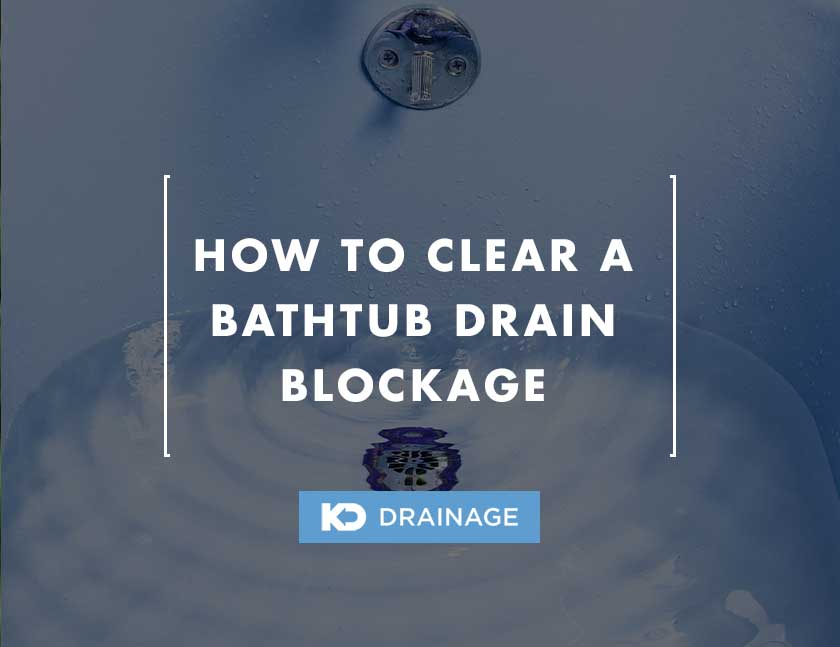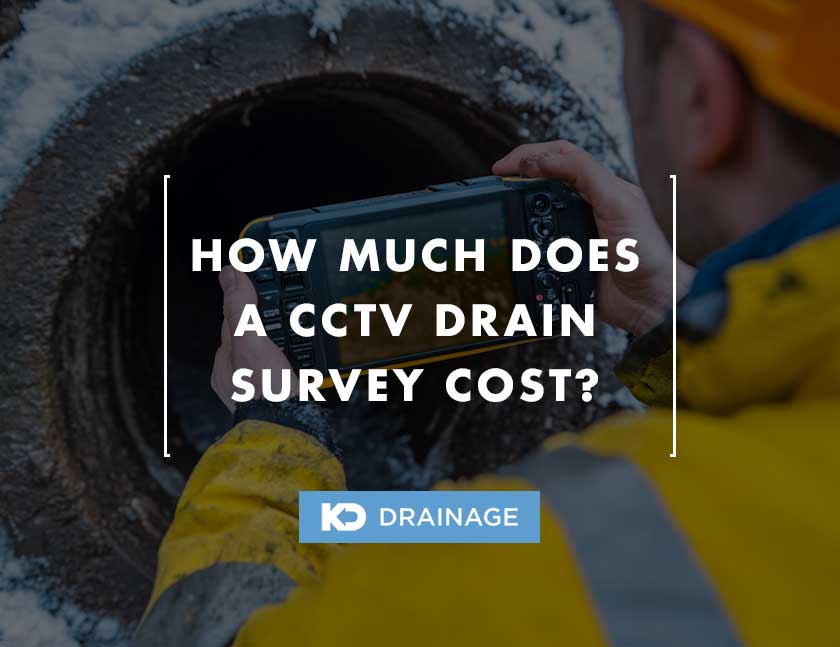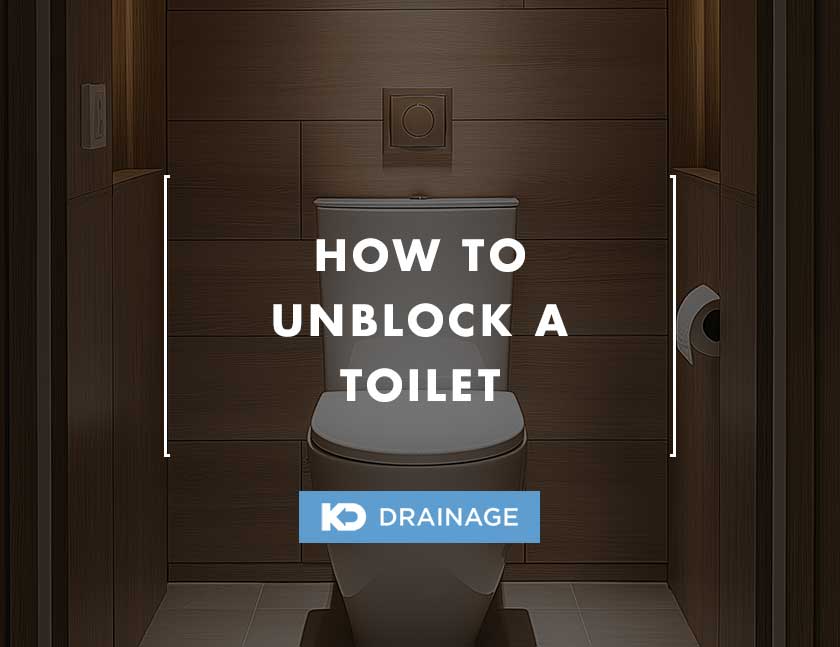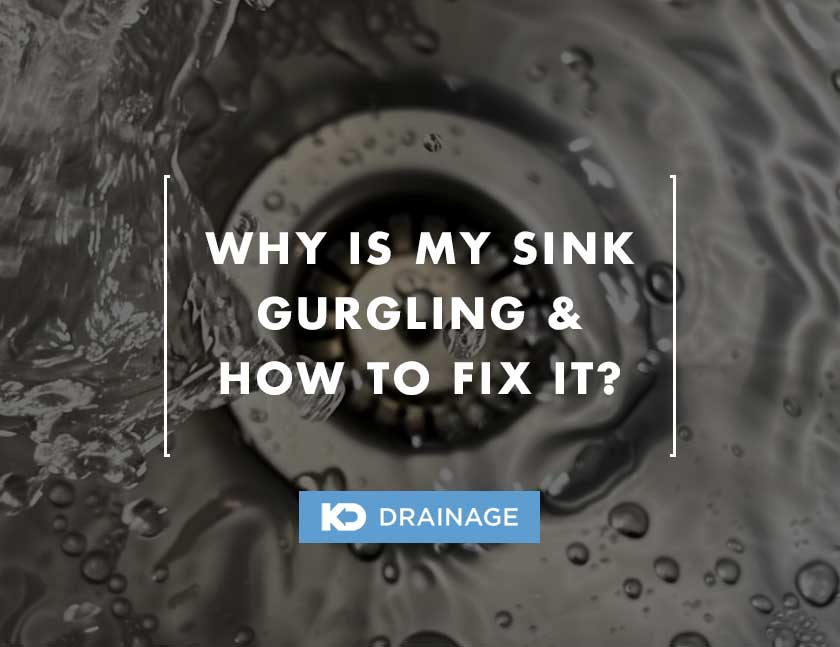
Why is My Sink Gurgling & How to Fix It?
1 August 2024
How to Get Rid of Rats in Drains
1 October 2024How to Clean a Grease Trap
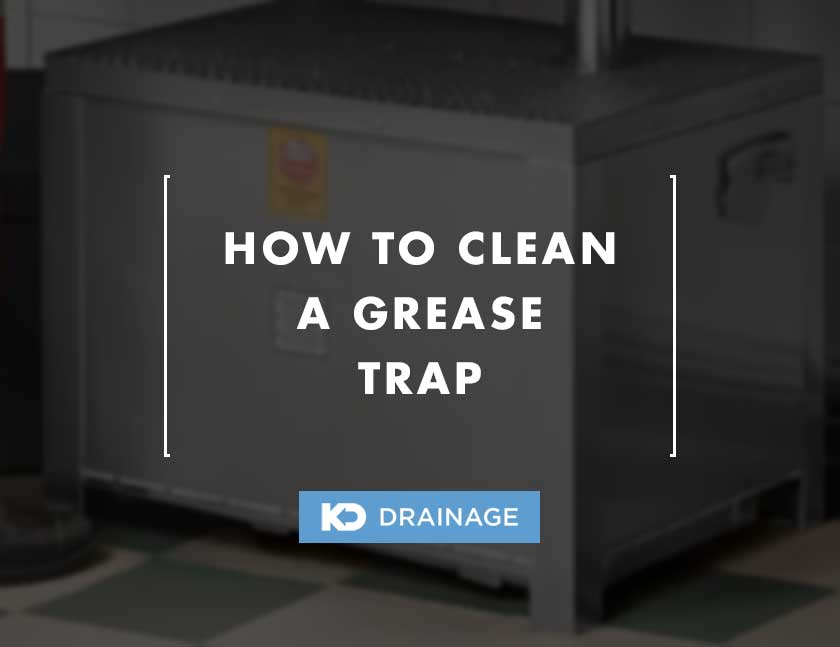
Cleaning a grease trap might seem daunting at first.
The idea of dealing with accumulated grease, food particles, and other debris can be off-putting.
Many people feel overwhelmed by the task and are unsure where to start, and also don’t exactly know how to clean a grease trap.
However, with the right knowledge and tools, cleaning a grease trap is a straightforward and manageable task.
This article will walk you through every step of the process in clear, easy-to-follow instructions.
You’ll not only learn how to clean a grease trap effectively but also appreciate the importance of regular maintenance.
Table of Contents
What is a Grease Trap?
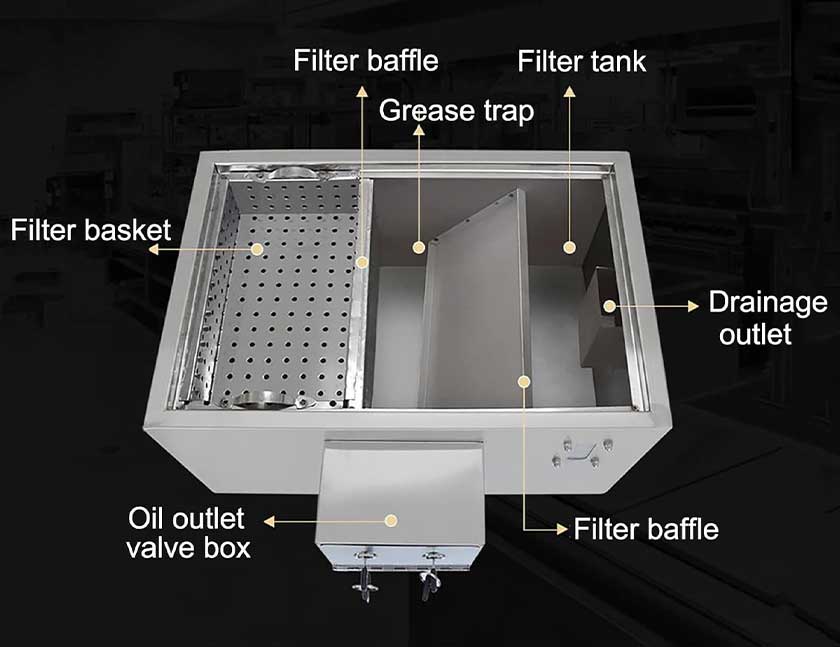
Source: Amazon
A grease trap is a plumbing device designed to intercept grease, oil, and solid food particles before they enter the wastewater system.
These traps are typically used in commercial kitchens, restaurants, and food processing facilities where a large amount of grease is produced.
They are also found in some residential homes with high kitchen usage.
The primary function of a grease trap is to separate greasy substances from water.
When wastewater flows from sinks and dishwashers into the trap, the grease, being less dense than water, rises to the surface.
Solid food particles, which are heavier, settle at the bottom.
This separation process allows cleaner water to exit the trap and flow into the sewage system, reducing the risk of blockages and backups.
Grease traps come in various sizes and configurations, ranging from small, under-sink units to large, underground tanks.
They are usually made from materials like stainless steel, plastic, or concrete, chosen for their durability and ease of cleaning.
Why is a Grease Trap Needed?
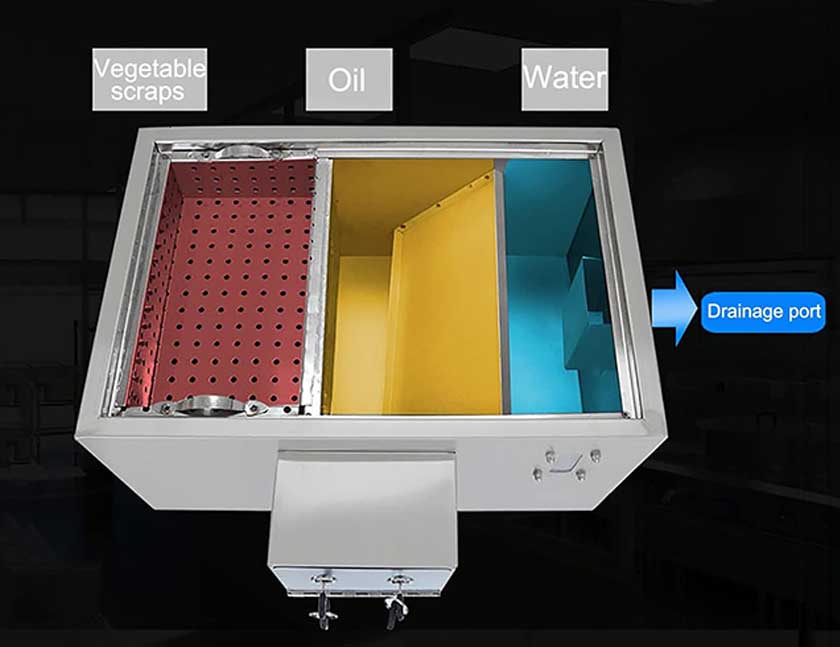
Source: Amazon
A grease trap is essential in both commercial and residential kitchens to prevent plumbing problems and maintain an efficient wastewater system.
Grease and oils, when washed down the drain, can solidify and cause significant blockages in pipes.
These blockages lead to slow drainage, backups, and even burst pipes, resulting in costly repairs and operational downtime.
In commercial kitchens, the volume of grease produced is substantial.
Without a grease trap, this grease would enter the sewage system, causing widespread issues.
Grease traps intercept these materials, allowing only cleaner water to flow into the sewage system.
Additionally, using a grease trap is often a legal requirement.
Health and safety regulations in many areas mandate the use of grease traps in commercial kitchens to protect public health and the environment.
Therefore, installing and maintaining a grease trap is not just practical but also a compliance measure to avoid legal repercussions.
What do you Need to Clean a Grease Trap?
Before you start cleaning a grease trap, gather these essential tools and supplies:
- Rubber gloves: Protect your hands from grease and grime.
- Safety goggles: Shield your eyes from splashes.
- Face mask: Prevent inhalation of unpleasant odours.
- Wrench or screwdriver: Open the grease trap lid.
- Bucket: Collect and transport grease and solid waste.
- Trash bags: Dispose of waste properly.
- Scraper: Remove hardened grease from the trap’s surfaces.
- Dish soap: Clean the trap thoroughly.
- Brush: Scrub away grease and debris.
- Hose or pressure washer: Rinse the trap clean.
How to Clean a Grease Trap
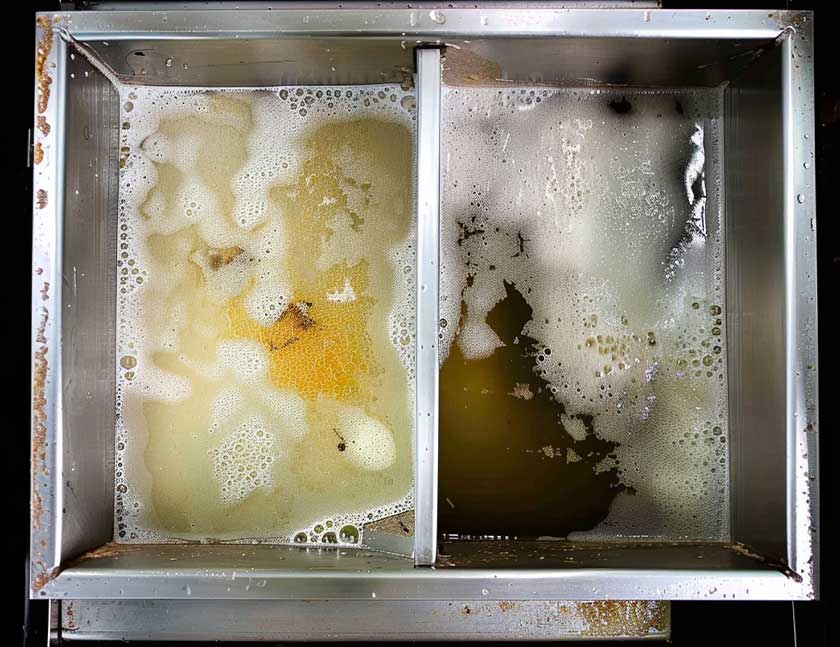
Cleaning a grease trap is essential to maintain a functional plumbing system.
Follow these detailed steps for effective cleaning:
Turn Off Water and Power
Before starting, turn off the water supply and any power connected to the grease trap.
This ensures safety during the cleaning process.
If the trap is connected to an electrical outlet for a heating element, make sure it is unplugged to avoid any electrical hazards.
Remove the Grease Trap Lid
Using a wrench or screwdriver, carefully remove the lid of the grease trap.
Be cautious, as the lid can be heavy and greasy.
Place the lid on a stable surface covered with newspapers or a disposable cloth to avoid spreading grease.
Scoop Out the Grease and Solids
Put on your rubber gloves, safety goggles, and face mask to protect yourself from the waste materials.
Use a bucket to scoop out the accumulated grease and solid particles from the trap.
The grease will often be thick and may require some effort to remove. Place these materials in a trash bag for proper disposal.
Make sure to use thick, durable trash bags to prevent leaks.
Scrape the Sides and Bottom
With a scraper, remove any remaining grease from the sides and bottom of the trap.
This step is crucial to ensure all residue is thoroughly scraped off to prevent future buildup.
Be thorough, as leftover grease can harden and make future cleanings more difficult.
Clean the Trap with Soap and Water
Fill the grease trap with hot, soapy water using dish soap.
Hot water helps to break down the grease more effectively.
Use a brush to scrub the inside of the trap, focusing on areas with stubborn grease deposits.
Ensure all surfaces, including corners and seams, are cleaned thoroughly. For best results, use a stiff-bristled brush.
Rinse the Trap
Rinse the grease trap with clean water.
You can use a hose or pressure washer for this step.
Make sure all soap and grease residues are washed away completely.
Inspect the water flowing out to ensure it is clear, indicating that the trap is clean.
Inspect the Trap
Examine the trap for any signs of damage, such as cracks, rust, or excessive wear.
If you notice any issues, consider repairing or replacing the grease trap to avoid future problems.
Check the condition of the gaskets and seals around the lid as well, as they can wear out over time.
Reassemble the Grease Trap
After cleaning and inspection, reassemble the grease trap by placing the lid back on and securing it with screws or bolts.
Ensure the lid is properly aligned and tightly secured to prevent any leaks.
Double-check that all components are reattached correctly and that there are no loose parts.
Turn On Water and Power
Finally, turn the water and power back on.
Check to ensure the grease trap is functioning correctly and there are no leaks.
Run water through the system to make sure it flows smoothly and there are no blockages.
If everything is in order, the grease trap should operate efficiently.
What are the Benefits to a Clean Grease Trap?
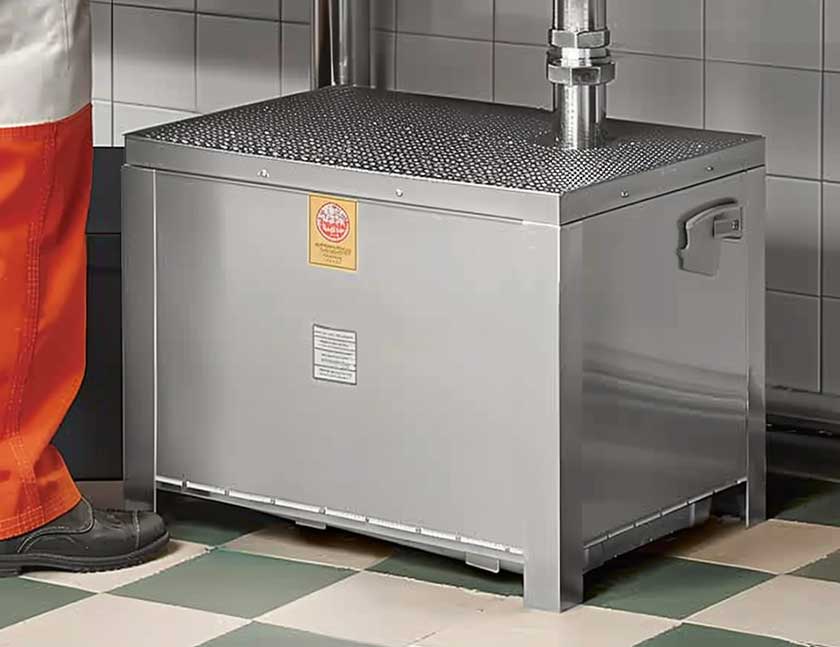
A clean grease trap offers numerous benefits, ensuring the efficiency and longevity of your plumbing system. Here are some key advantages:
Prevents Clogs
A clean grease trap effectively captures grease and solid particles, preventing them from entering the sewage system.
This reduces the risk of clogs in your pipes and blocked drains, which can lead to slow drainage, backups, and costly repairs.
Reduces Odours
Grease traps that are not regularly cleaned can develop foul smells as grease and food particles decompose.
Regular cleaning prevents the buildup of these materials, keeping your kitchen smelling fresh and hygienic.
Maintains Efficiency
When a grease trap is clean, it operates more efficiently.
It can effectively separate grease from wastewater, ensuring that only clean water enters the sewage system.
This helps maintain the overall efficiency of your plumbing system and reduces the strain on wastewater treatment facilities.
Extends Lifespan
Regular maintenance and cleaning can significantly extend the lifespan of your grease trap.
By preventing the buildup of corrosive materials and ensuring the trap operates smoothly, you can avoid the need for frequent replacements.
Saves Money
Preventative maintenance, like regular grease trap cleaning, can save you money in the long run.
It reduces the risk of emergency plumbing repairs, which can be expensive and disruptive.
Additionally, it helps avoid fines and penalties from health and environmental authorities.
Environmental Protection
A clean grease trap helps protect the environment by preventing grease and oils from entering the sewage system.
This reduces the risk of pollution and contributes to more effective wastewater treatment processes.
What are the Dangers of Not Cleaning a Grease Trap?
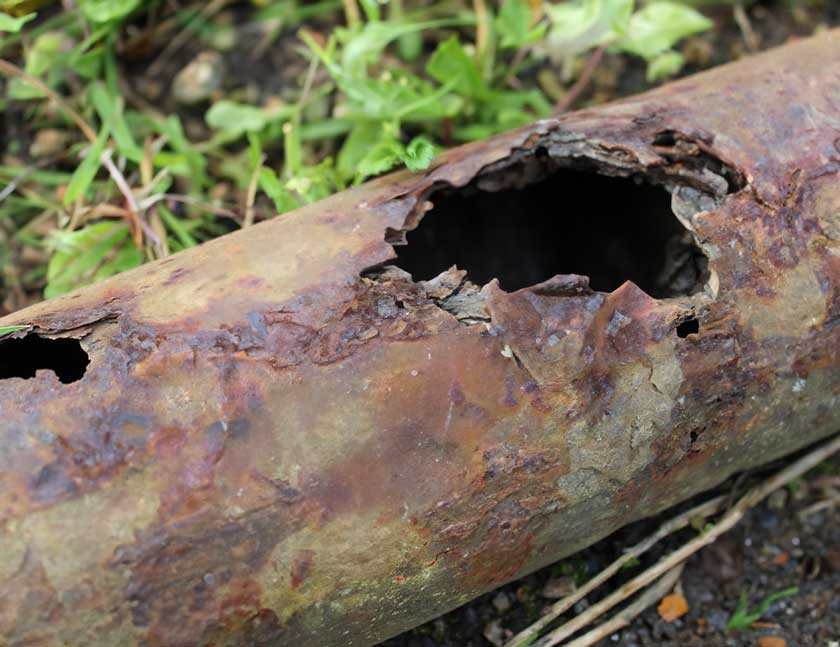
Neglecting to clean a grease trap can lead to various serious consequences, affecting both your plumbing system and your business.
Here are the key dangers of not cleaning a grease trap:
Clogged Pipes
One of the most immediate risks of not cleaning a grease trap is the buildup of grease and solid particles in your plumbing pipes.
Over time, these substances can accumulate and form blockages.
Clogged pipes and blocked drains can cause wastewater backups, slow drainage, and eventually lead to complete pipe failure.
Repairing clogged pipes is not only costly but also disruptive to your operations or daily life.
Foul Smells
As grease and food particles decompose in a neglected grease trap, they can emit strong, unpleasant smells.
These odours can permeate your kitchen or facility, creating an unpleasant environment for employees, customers, or residents.
Controlling odours becomes more challenging once they have developed, often requiring extensive cleaning.
Health Hazards
Dirty grease traps are breeding grounds for bacteria, mould, and other harmful microorganisms.
These contaminants can pose serious health risks, especially in food preparation areas.
Exposure to bacteria and pathogens can lead to illnesses among employees or household members, affecting productivity and well-being.
Compliance Issues
Health and safety regulations often require regular cleaning and maintenance of grease traps, especially in commercial kitchens and food service establishments.
Failure to comply with these regulations can result in fines, penalties, or even closure orders from health authorities.
It’s crucial to adhere to local regulations to avoid legal consequences and ensure the safety of your operations.
Increased Maintenance Costs
Ignoring routine cleaning of grease traps can lead to more frequent and costly repairs of plumbing systems.
Over time, the buildup of grease and debris can cause damage to pipes, pumps, and other plumbing components, necessitating repairs or replacements that are far more expensive than preventive maintenance.
Environmental Impact
Dirty grease traps allow grease and oils to enter the sewage system untreated.
These substances can pollute waterways and harm aquatic life.
By not cleaning grease traps, you contribute to environmental pollution and may face environmental regulatory fines or sanctions.
Conclusion
You should now have more information on exactly how to clean a grease trap.
Cleaning a grease trap is essential for smooth operations. Regular maintenance prevents clogs and odours.
It also extends the life of your plumbing.
Follow the steps outlined in this guide.
With the right tools and knowledge, you can keep your grease trap in top shape.
Remember, a clean grease trap is crucial for both efficiency and safety.


